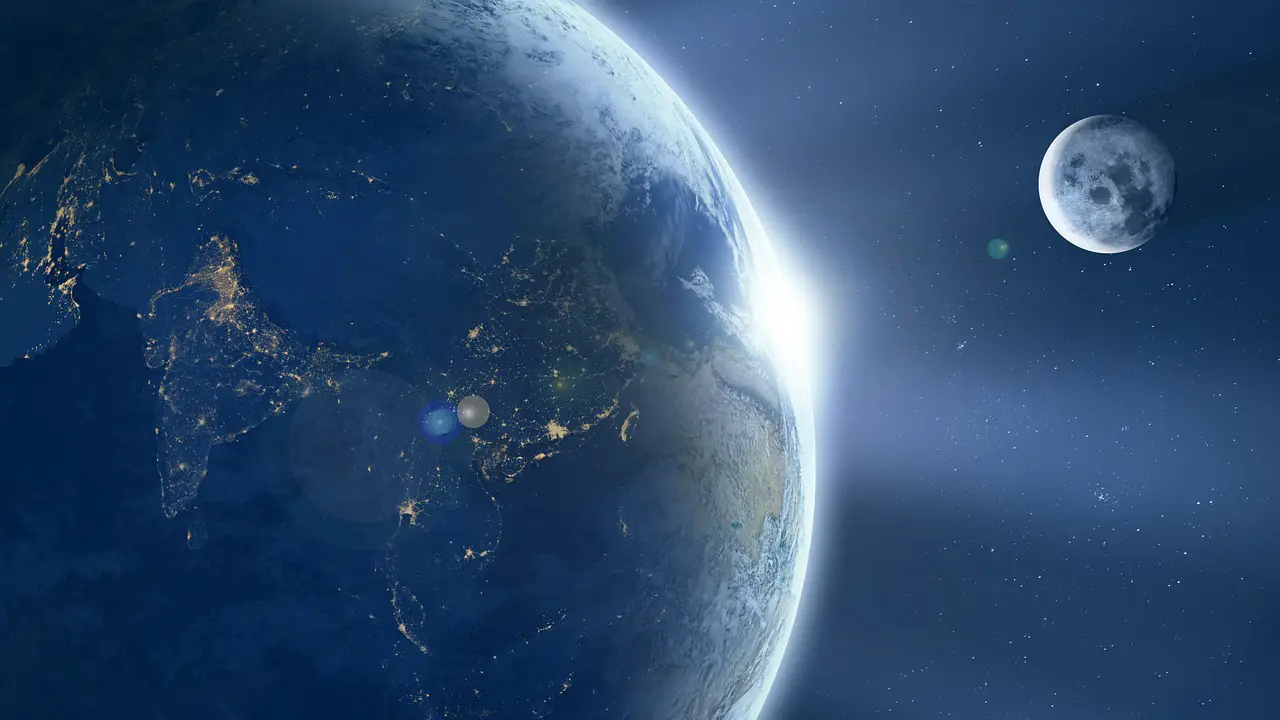Will Earth ever lose its moon? is a question that has long piqued the interest of both scientists and stargazers in the vast cosmic dance between Earth and its moon.
No, not in the way you may think, is the succinct response. According to Live Science, the Earth and its moon will eventually perish together when the Sun destroys them rather than splitting apart. Our long-lasting relationship with the moon appears to be evidence of the persistent energies that unite us.
The Moon’s Gradual Drift
The relationship between the Earth and the moon is not static, despite this amazing event. On the other hand, the moon is gradually moving away from us as a result of gravitational forces. The National Radio Astronomy Observatory estimates that until the moon eventually stops moving away from Earth, this progressive separation will last for around 15 billion years.
There are significant ramifications for our future in this cosmic dance of separation. The moon will have orbited far enough from Earth in 600 million years for mankind to lose one of the oldest cosmic sights: total lunar eclipses, according to an article in The Atlantic. We will have less and fewer chances to see this amazing natural beauty as the moon gets farther away.
This breathtaking ballet of the stars serves as a powerful reminder of the dynamic nature of the cosmos and the intricately balanced interactions that mold our experience of it. The moon’s gradual migration not only modifies the interactions between Earth and its satellite but also affects the rotation of the planet and the tides.
In addition, the moon’s slow separation gives us the opportunity to consider the complex interactions that have molded our cosmic surroundings over billions of years. It serves as a reminder that nothing in the cosmos is static and that cosmic evolution affects even seemingly unchanging celestial bodies like the moon.
Thus, let us recognize the elaborate dance taking place in the vastness of space as we marvel at the beauty of a full moon or experience the wonder of a lunar eclipse. It serves as a reminder of the wonders that are all around us and the continuing exploration of the ever-expanding universe that lies ahead of us.
Public Discussions and Predictions
Users enthusiastically echoed the findings that the moon, our celestial companion, will remain locked in a mesmerizing dance with Earth, but over time, it will gradually drift farther away, enchantingly transforming the dynamics of our cosmic relationship, according to a fascinating discussion on the Reddit ‘Ask Science’ thread. The lunar eclipses will eventually come to an end as a result of this celestial waltz between the moon and Earth, leaving us in awe and full of hope for the future.
Now, the intriguing issue is raised: when will the moon leave Earth’s embrace for good, heading out into the wide cosmos? Ever the inquisitive knowledge seekers, Quora users propose that, given the moon’s present rate of gradual withdrawal from Earth (about 3.8 centimeters annually), an astounding 50 billion years will pass before the moon completely breaks free of Earth’s gravitational pull and sets out on its own cosmic journey.
Thinking about this longer timescale reveals the fundamental significance of this astronomical event, highlighting the incredible size of the moon’s orbital dynamics and the unfathomable timescales that weave our universe together. Thus, let us celebrate the wonders of our lunar friend and treasure each lunar eclipse as a celestial event that serves as a constant reminder of the immense wonders that exist throughout the vastness of the cosmos.
The Science Behind It
More information about the amazing phenomena of the moon progressively separating from Earth may be found on Astronomy.com. The moon is currently moving at a pace of about 1.49 inches (or 3.78 cm) every year, according to their comprehensive explanation. The moon’s orbital period lengthens as a result of this minute but noteworthy distance increase, somewhat changing the moon’s appearance in our night sky.
According to Space.com, new research has added even more light on this cosmic distance and shown that it has been going on for the past 2.5 billion years, which is an incredibly long time. This astounding discovery highlights the lunar drift’s steady and gradual progression over innumerable generations.
The fundamental reason for this fascinating lunar drift may pique the interest of inquisitive and curious minds. The complex and continuous tidal friction between the moon and the Earth’s seas is the cause of this amazing phenomena, according to NASA experts. The moon slowly recedes from our planet as a result of this ongoing contact, creating a striking and breathtaking image of the dynamic nature of our enormous universe and the ongoing interaction between celestial entities that shapes our cosmic landscape.
In summary
In conclusion, even if the moon will not suddenly and catastrophically disappear from Earth, our relationship with our nearest celestial neighbor is gradually altering due to the moon’s progressive orbital change. You may, however, be confident that the moon won’t disappear anytime soon. For billions of years to come, it will remain our enduring cosmic friend, illuminating our night skies.
Sources
- Live Science
- National Radio Astronomy Observatory
- The Atlantic
- Quora
- Astronomy.com
- Space.com
- Livemint
![]()
